new posts in all blogs
Viewing Blog: Chad Wallace Art, Most Recent at Top
Results 1 - 25 of 61
Paintings, Drawings, Animal Art, Landscapes, Children's Book Illustration, and more.
Statistics for Chad Wallace Art
Number of Readers that added this blog to their MyJacketFlap:
Designer - Summer 2016, Vol. 41, No. 2
Getting To Know Chad Wallace
By Ella Rue
Illustrations by Chad Wallace
Chad Wallace is an incredibly talented, multi-award winning children’s book illustrator, author, and poet who lives in Westchester, New York. He was born in New Rochelle, New York but grew up in Katonah, a small hamlet within the town of Bedford, in Westchester County New York, in a home that was a young boy’s paradise. With two large pine and two large apple trees, in addition to a cherry and oak tree coupled with wild raspberry bushes that had he and his brothers set for snacking and climbing while whiling away many a spring day.

When he was about ten years old his family moved up the street to a bigger house, which also had its own outdoor charms—a steep hill with a babbling brook at the bottom, and a dark pine forest sectioned off by old rock walls. Nature inspires and is often the subject of much of Chad’s work.
In 1993 he graduated from Somers High School with his sights set on Syracuse University. There he studied illustration and was awarded the “Outstanding Senior Award” along with a Bachelor of Fine Arts degree. In 2011 he earned a Master of Fine Arts degree from the Fashion Institute of Technology.
When asked at what age he knew he intended to become a professional artist, he responded that when he was in his 20s he ran into his first grade teacher and, much to his surprise, she somehow recognized him. “Chad!? How are you? Let me guess, you’re an artist?” “How did you know that?” he asked surprised. “Because you were always drawing amazing pictures and I just knew you would someday become an artist.”
We continued our discussion and here are some of the other surprising information I found about Chad Wallace.
DID YOU EVER CONSIDER ANYTHING OTHER THAN ILLUSTRATION?
In kindergarten I wanted to be a paleontologist, you know, the guy who digs up dinosaur bones. Looking back, I think it’s funny that I even knew what that profession was. But by first grade I think I was destined to be an illustrator. WHERE DO YOU LOOK FOR INSPIRATION? I look to nature. I think as humans we have become disconnected. When we are young we see more clearly in a lot of ways, so I try and recall instances from my childhood where I’ve felt connected. I used to hang out in trees, play in the garden, walk in and along a stream, etc. Much of my art is based on this sort of symbiotic relationship with the natural world. WHAT WAS THE BEST PIECE OF ADVICE YOU EVER RECEIVED?
There have been many pearls of wisdom bestowed upon me that collectively dictated the course of my life. One quote comes to mind: “ In moments of great inspiration you have the feeling that the work you are doing is the most important thing you have ever done or ever will do.” –Andrew Wyeth 


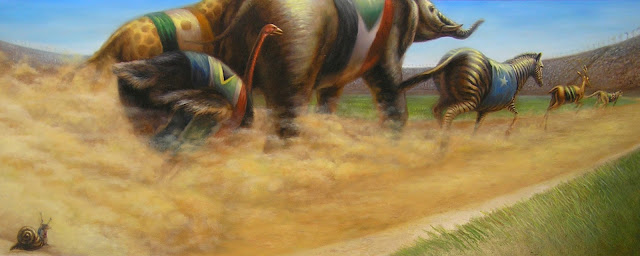
TELL ME SOMETHING UNUSUAL ABOUT YOURSELF.
Well I play on and manage a men’s league ice hockey team in Brewster, New York. Somehow I get the impression I don’t share the ice with too many children’s book illustrators... I do worry about some meathead coming down across my hands with his stick, but for me it’s worth the risk. In my case, hockey allows me to focus my energy in a physical way. That’s not to say creativity doesn’t come into play in a sport such as this. Perhaps that’s why I like it so much. And it’s great exercise.
WHO ARE SOME OF YOUR FAVORITE ARTISTS OF THE PAST (AND WHY)? HOW ABOUT PRESENT?
Leonardo daVinci—His brilliance was more than just the ability to draw and paint. He dedicated his life to the understanding of “everything.”
Claude Monet—I admire how he was able to capture the intricate beauty in nature. He had a bond with nature that is clearly visible in his work. And his use of color is spectacular.
N.C. Wyeth—Paved the way for all illustrators who followed. His paintings were extremely narrative and passionate. And he was a good teacher, encouraging his students to write as well as paint. Andrew Wyeth—Andrew’s closeness with nature and attention to detail is inspiring. He could make a dead bird in the grass beautiful. Different from his father in that the narrative in his paintings are typically more subtle. Norman Rockwell—Amazing how he captured emotions and sentiment in his paintings. He was so knowledgeable when
it came to composing his images, what to place and where to guide the viewer’s eye around the composition as well as make a psychological statement. Dr. Seuss—I think his ability to explore a concept and hook the reader from beginning to end is one of the reasons why I wanted to get into children’s books.The rhythm of the words, and the buildup as you read is engaging. I love books that rhyme and he’s why. James Gurney—In my opinion the best living illustrator. He knows what look he is after and does whatever it takes to get there, whether it means building a maquette, posing models, or doing studies on location. He also shares his techniques in the form of books and online video tutorials. Also met him a few times. Really nice guy. Chris VanAllsburg—An art instructor in college once told me that I draw like Chris VanAllsburg. So I looked him up and have been a fan ever since. I love the three dimensional aspect of his work, and the softness. I later learned he studied sculpture, which makes a lot of sense.
Maurice Sendak—I like him because he told the “truth.” He wasn’t afraid to take risks and did not condescend to children. And kids knew it.
Shel Silverstein—Also knew what it meant to be in a child’s imagination. I especially like his poetic writing. It always had random twists and turns and a surprise ending. I think kids get bored easily, and he knew that.
Shaun Tan—I recently began studying his work, The Arrival in particular. It is so in depth and surreal, and extremely well drawn. I often come up with a concept and try to cram it into a 32-page format. Too often my idea grows too sophisticated for young kids and I lose my target audience. Tan’s graphic novel approach shows me that there is an audience for work with this sort of scope.
IF WE ARE SITTING HERE A YEAR FROM NOW CELEBRATING A GREAT YEAR ITS BEEN FOR YOU, WHAT DID YOU ACHIEVE?
I think a best-selling book would be fun, and a Caldecott medal
on my bookshelf would look nice. It would probably also mean that I found an agent I could trust and can get my ideas in front of those who might be interested.
WHAT TURNS YOU ON CREATIVELY, SPIRITUALLY, OR EMOTIONALLY?
My family spent a lot of summers in Harriman State Park, New York. Hiking, camping, boating, swimming, etc. I draw on my childhood experiences all the time when I am conceptualizing. Many of my themes are set in an outdoor environment, and taken from the point of view of characters that would be found there, like a frog or a turtle. I especially like writing and drawing animals, and not just because I am a nature lover. I believe they have great metaphorical properties that I can use to reach a general audience. You don’t have to worry about relating to a specific gender necessarily, or alienating an ethnic group. Everyone can relate to these characters if done well.
WHAT TURNS YOU OFF?
People who are too quick to slap a label on you. When I hear, “That’s not a real job” it aggravates me. For me there’s nothing more real than what I do. (Insert Andrew Wyeth quote here)
IF HEAVEN EXISTS, WHAT WOULD YOU LIKE TO HEAR GOD SAY WHEN YOU ARRIVE AT THE PEARLY GATES?
“What took you so long?” Actually, I would like to hear how I was generous and caring but did not allow myself to be victimized too often; that I bravely faced my fears and conquered them. There’s a movie called Defending Your Life that is all about this idea.



WHAT IS YOUR FAVORITE WORD?
Empathy
WHAT IS YOUR LEAST FAVORITE WORD?
Hopelessness.
WHAT DO YOU THINK PEOPLE SAY AT YOUR FUNERAL?
“This is the first time Chad left the party before everybody else!”
WHAT DO YOU WANT MOST OUT OF LIFE?
To be able to raise a family doing what I love, stress free, and without limitations.
WHAT DO YOU KEEP AROUND YOUR STUDIO TO GIVE YOU INSPIRATION?
I have quite a collection of children’s books on my bookshelf that I consult with frequently. Now that I teach it has become a routine to grab a few books and bring them to show my students when applicable. It is my hope that my enthusiasm rubs off on them and provides insight as to what it means to be a creative person. Likewise, when I see a student apply what I teach and find value in it, I too am inspired.
WHAT IS THE CRAZIEST (OR MOST ADVENTUROUS) THING YOU'VE EVER DONE?
Well some friends and I drove across the country... Twice. And I went bungee jumping in Mexico. Not the smartest thing I’ve ever done.
HOW DO YOU WANT TO BE REMEMBERED?
I’d like to be remembered as an optimist, somebody who was always willing to give somebody the benefit of the doubt. If this means I am too naïve and trusting so be it. But I would much rather be this way then walk around cold and bitter. I fell in love with children’s books because they are pure. They appeal to the good nature in all of us. I hope my books and paintings share that innocence.
About Chad Wallace
In 2008 Chad was awarded the Stevan Dohanos Award
at the Society of Illustrators, New York for his Animal Olympics—Wrestling piece. He has illustrated eleven books for children including: Earth Feeling the Heat (2010), Seahorses (2012), and The Mouse and The Meadow (2014), which he both wrote and illustrated. The first time author has enjoyed a lot of success with his new book, winner of an International Book Award, NABE Pinnacle Achievement Award, and a Mom’s Choice Award (2014). Four illustrations were also featured in the Society of Illustrators—Illustrators 56 Annual Show.
Chad has worked with publishers Henry Holt, Scholastic, Sterling, and Dawn Publications. He has also served as an adjunct professor of illustration at Syracuse University and presently holds a position at the New York City College of Technology. He is currently interested in re-formatting children’s storytelling for the modern age through use of interactive E-Book media. His book The Mouse And The Meadow is available as a 3D pop-up app for iPhone/iPad, complete with animations and automated voice over reading. Today Chad continues to develop his writing and illustration work. His recent book—Mighty Mole and Super Soil was released Fall 2015. He continues to write and illustrate and is looking to meet with publishing houses.
Gameplay
This video demonstrates roughly what the gameplay will be like. While Malachi and I are still working hard to develop content for our virtual world, at least we can take a few "practice flights" to let us (and you) know where we're at. That's Malachi's finger in the upper right directing "Bella" where to go. Improvements could be made to how her body moves while flying, but that's why we run these tests. These tests also illustrate what content needs to be made. Right now as Bella takes us on this tour through the Unity 3D terrain we created, there's clearly not enough vegetation and flowers. I will continue to create the art for the assets and Malachi will continue plugging them in until we are satisfied with the look of the game.

Making a game look good is one thing, but the game has to be fun to play. This video gives us a taste of what players will experience when they play our game. We still have a long way to go to make the game more challenging as the game goes on. To do this we need to implement algorithms and timers, etc., all kinds of technical things so that the gameplay does not appear
repetitive. Unity is helpful in that regard. Our goal is to create a game like Sims City, where the more you play the bigger your world becomes. Or in this case, your hive. As Bella completes her missions her hive grows. More young bees means more food is necessary and so the player must be more efficient than ever. Wrong turns cost time. Finding that great source of nectar is more important. Performing the "Waggle Dance" flawlessly is crucial. Not to mention all the other chores that take place in the hive - cleaning the cells, storing honey, building comb, feeding young bees... Sound challenging enough? That's just the beginning...
 The language of bees is important to understand, and so we are committed to making a lesson out of it. Bees orient their hives North - South. They use the sun in relation to the food source and hive as a reference points. This gives us the direction of the food source. The frequency of the waggles and size of the dance circle determines the distance.
The language of bees is important to understand, and so we are committed to making a lesson out of it. Bees orient their hives North - South. They use the sun in relation to the food source and hive as a reference points. This gives us the direction of the food source. The frequency of the waggles and size of the dance circle determines the distance. http://newsroom.ucr.edu
http://animalwise.org
 Here's a glimpse of the action inside the hive. These "games within the game" will demonstrate how hard bees work as well as test the player's wits and reflexes. At this point we are simply testing how the bees move and the interactivity of the whole thing.
Here's a glimpse of the action inside the hive. These "games within the game" will demonstrate how hard bees work as well as test the player's wits and reflexes. At this point we are simply testing how the bees move and the interactivity of the whole thing. The task being shown in the clip (right) is the storing of honey. It's a bit buggy, but we're working on it (no pun intended).
Thanks for checking in, Look for new updates as we hit the home stretch in the completion of Nectar: A Honey Bee Quest!
 One of the great things about being involved in a project like Nectar is that I get to play with really cool programs such as Z Brush. I've never done any modeling before (not like this anyway) so there was a bit of a learning curve. I won't bother showing you some of my early attempts, but this image (left) is a good example of what one of these 3D models looks like at first.
One of the great things about being involved in a project like Nectar is that I get to play with really cool programs such as Z Brush. I've never done any modeling before (not like this anyway) so there was a bit of a learning curve. I won't bother showing you some of my early attempts, but this image (left) is a good example of what one of these 3D models looks like at first.
You start out with a sphere that you can pull into cylinders and cones. At any point you can add spheres to each shape and manipulate those as well. The structures can be moved at the newly created joints and can be enlarged, shortened, or removed entirely. So with very little effort one can generate a basic skeletal structure. This guy is to become one of the game's baddies.

Once the structure is completed it's time to model the character. This is done by adding and carving into "clay" Z Brush has a symmetry feature which allows me to render the details of the spider equally on both sides. So essentially I only need to model half a spider... In this snap shot you can see my in progress. Notice the joints on the front legs and texture on the head. It's in these details where I can enjoy implementing my style.
Now that I have a finished model it's time to start painting. For this I spend a lot of time looking at photos. This particular spider is a Garden Spider. This is my interpretation of what I gathered from several photos.
Garden Spider
Check out this awesome Ambush Bug modeled by my partner Malachi. My task was simply to paint it. It was difficult landing on a color scheme and patterns because these guys change color to blend into their environment. It may be necessary to paint several variations of this predator depending on what flower it will be hiding in. Anyway, I chose to make it brown and green, obviously two very common colors in our game. It's hard to believe this creature really exists. Seems made up to me!
ambush bug
Some more assets to our game. As always, the leaves and stems are interchangeable. That means they can be flipped, moved around, and distorted to look like different leaves. So several variations on these plants can be placed in the game and they won't all need to be identical. Too much repetition can destroy the illusion of flying around as a bee in the natural world.
cantaloupe
clover (side view)
clover (top view)
milkweed
skunk cabbage
sunflowers
Modeling
Malachi and I have spent a great deal of time on the creation of Bella, the star of our game. Malachi supplied me with an amazing 3D model he created in a program called Z Brush. Using Z Brush I was able to draw in more detail and apply color. The finished Bella is now ready to be plugged into the game and for us in promotional materials.
The Bee Tree
Now that we have our main character, it's time to develop home base - The Bee Tree. Above is an example of Malachi's original sculpture. It's up to me to add the bark texture and paint it to the best of my ability. If you look closely you can see where I already began playing with brush types and textures.
In the end it would require a combination of Z Brush tools, some additional sculpting, and a paint job. Above you can see how I used a rake tool to further subdivide the form and lay out the foundation of tree bark. I also experimented with new features such as moss and mushrooms.
Building up and carving into the digital clay was necessary to achieve a realistic oak tree bark texture. Further manipulation of the model may be necessary once it's put into the virtual world Malachi and I are inventing.
I am pleased to have begun work on Nectar: A Honey Bee Quest, an interactive game app conceived by Malachi Bazan of Nevada City California. Mal approached me over a year ago about the potential of collaborating on a fun, educational game featuring honey bees. My job is to render background art, create textures, model characters/assets, and work closely with Malachi on game play and story lines. Mal is a gifted animator and programmer. He's also a skilled character modeler and 3D designer. Our goal is to create a game with a strong mood and attention to detail, to put the player in the world of honey bees. In doing so, we hope to create empathy for these insects, and educate young people of their importance.
The first step is to design the world our honey bee character (who we call Bella) lives in. Below are some samples of various textures for leaves, trees, and ground. This 2D art will be melded with 3D assets within the game to create the environment.
TREES
Apple Tree
Maple Tree
Pear Tree
This game will require several types of trees for Bella to fly into. The leaves and tree branch art will be fixed to three-dimensional structures within the game, sort of like placing a skin over an object. The leaves and twigs on these branches are all separate assets and can be moved, flipped, and rotated so that they can appear random.
Apple Tree Branch
Maple Tree Branch
Pear Tree Branch
Pear Tree Leaves
I gave particular attention to the details on the leaves. From Bella's perspective, these leaves must hold up visually when players fly in close. Several variations of each type of leaf are drawn up, and with the help of some tools in Photoshop they can be manipulated further. Everything put together and you have any number of trees all of which will be unique.
Tree Bark Texture
What about the big parts of the tree? Like the trunk for instance. For that I have to design bark texture that can be wrapped around a 3D model placed within the game matrix.
Apple Tree Bark
Maple Tree Bark
Pear Tree Bark
I enjoyed drawing up these textures. Every species has unique bark patterns and coloring. I look at several samples of bark in order to get a feel for each type. In order to cover large areas that can wrap around a 3D tree trunk the artwork has to "tile" as seamlessly as possible. So they must connect top to bottom and left to right. If any details stand out too much or aren't spread out evenly, a pattern can emerge. The Pear Tree sample below is an example of a texture that still needs a little work. Of course there is only so much you can do.
Apple Tree Bark (tiled)
Maple Tree Bark (tiled)
Pear Tree Bark (tiled)
Ground Texture
It is especially important for ground textures to tile comfortably because it has to cover a large area. 3D assets such as trees, bushes, rocks, etc will break up the monotony and a believable world will emerge.
Dirt
Mud
Stone
Dry Grass
Dirt (tiled)
Mud (tiled)
Stone (tiled)
Dry Grass (tiled)
Here's a peak into my process for The Mouse & The Meadow, due for release February, 2014.
The first thing I had to do was create the main character. Here's how the mouse looked at first. I quickly determined the mouse was not cute enough or young looking like he's supposed to be in the story.
Here's the revised character in a comp. I shortened his snout which made him look more childlike. I also began to work out the setting.
The finished spread. I wanted the first page to be bright and cheerful, to set the tone for the rest of the book.
When I first wrote
The Mouse & The Meadow I did some experimental illustrations to see how it could look. This is an early interpretation of the box turtle scene. It also happens to be one of my earliest attempts at digital painting.
I had to rethink the illustration to fit into a double page spread. At first I tried to salvage some of what I accomplished the first time around and combine it with new sketches.
After doing some research and digging through my sketchbook, I was able to come up with this finished comp. The background elements are mostly based on drawings I've done in the past involving meadows. Three paragraphs of type and the center gutter made designing difficult. At this point all my values have been established and it's ready for color.
The finished illustration. Based on the fact that these box turtles have warm coloring, I knew having a cool background would help the characters pop forward. This is one of four pieces selected to be in the
Illustrators 56 Annual and Show at the Society of Illustrators, NY.
Take a look at the early sketch for the bunny scene. I had a great deal of trouble balancing the text with seven bunnies, one mouse, and one adult rabbit...
This is how it wound up. Flipping the whole scene was a start, and repositioning the rabbit and bunnies this way makes more sense and there's plenty of room for type where the light is filtering through the hole. I did my homework to get the anatomy and details right. I'm looking forward to the interactive app version of this page (you can wake the bunnies up by touching the screen).
Another early digital attempt from when I first wrote the manuscript. Fortunately I was able to preserve the spirit this piece always had and reformat it for the double page spread.
The revised art. I was glad to be able to add other fireflies flashing in the background. And more contrast adds to the drama. This piece was also selected for the Society of Illustrators show in February.
One of my favorite places to draw - The Museum Of Natural History.
Dear Friends of Nature,

As we all know, honey bees need help! And kids need to be inspired by nature. Both of these goals come together in
NECTAR: A Honey Bee Quest, a game app for kids. This game is the inspiration of
Malachi and Chad, two artistic and technically savvy young people. It’s a game in which kids “become a bee” and gather nectar, pollinate flowers, do the waggle dance, and much more. Along the way, kids will have lots of fun as they learn how very important bees are!
Mal and Chad are doing this
on their own—an enormous undertaking—so they launched a Kickstarter campaign. We at Dawn Publications are so excited by it that we have pledged to
match a successful campaign.
Can you help
NECTAR: A Honey Bee Quest become a reality? Check out their proposal at:
http://www.kickstarter.com/projects/1696576220/nectar-a-honey-bee-quest BTW – Mal and Chad are offering a bunch of incentives
—and you’ll get a free game with a pledge of only $15.
Thank you!—from all of us at Dawn Publications.
Today I was informed that I'm a children's book I wrote is going to be published by Dawn Publications! Here is an image from the story. Due for release spring 2014.
The transition from digital, to oil, and back to digital...
On the left is a digital under painting I drew in Photoshop. The middle piece is a result of printing out that under painting and glazing oil color over top. I guess I just wasn't ready to put the brush and paint away. On the right I took out the middle process and did a color overlay in Photoshop.
EARTH Feeling The Heat - 2010.
The finished painting, done in Photoshop using a color overlay. Getting from the finished comp to full color is relatively easy since the values were already established. Kind of like glazing oil washes over a solid under painting.
This wound up being the cover of
Seahorses - By Jennifer Keats Curtis, Henry Holt and Company.
Further refinement to the point I'm satisfied with the overall composition and details.
Here the sketch is refined and starting to move towards color by creating a neutral half tone. Magenta usually works for me if I know the color palette will be on the cool side.
Sketch of "Small Fry" for my recently released book
Seahorses by Jennifer Keats Kurtis, Henry Holt and Company.
OK, it's been a while since my last blog post... I'm going to try and be better about sharing what I've been doing. Picking up where I left off, here's a concept I started long ago and recently continued with in light of new discoveries on Mars. Perhaps a bit of an exaggeration, but fun anyway.

Come see artwork for my upcoming book: Seahorses - by Jennifer Keats Curtis, Henry Holt and Company. Included is an E-Book animation I created based on the story and illustrations.
I am thrilled to have received my Masters of Fine Arts, and to be included in a show alongside many talented friends.

Sunrise - Camp K-20, Bear Mt NY.

The Addams Family on Broadway. A poster assignment for Grad School - FIT.

Pencil drawing reworked with ink.

These little guys have a very complex structure, and each are unique. But the more I draw them, the better feel I get for their anatomy.
View Next 25 Posts









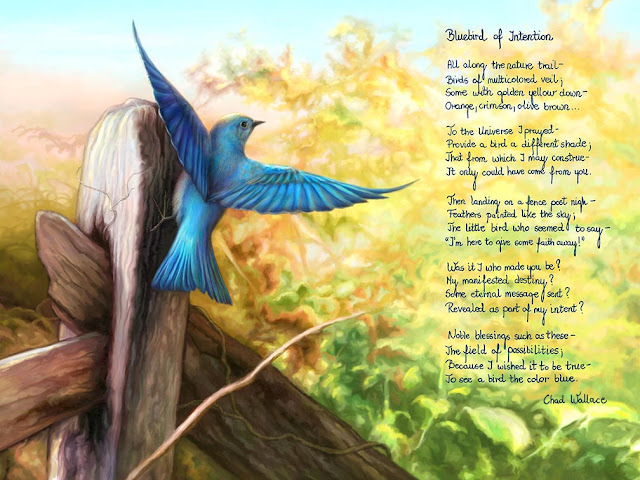




























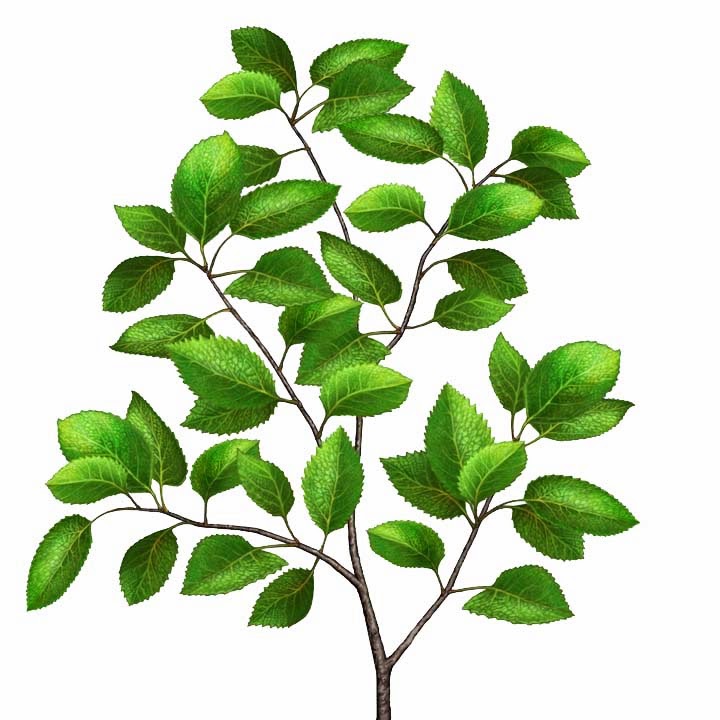

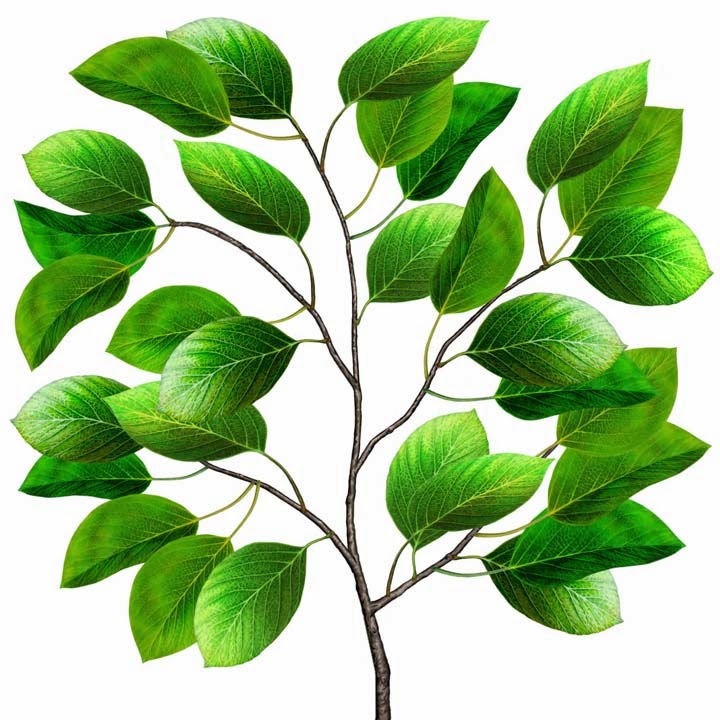



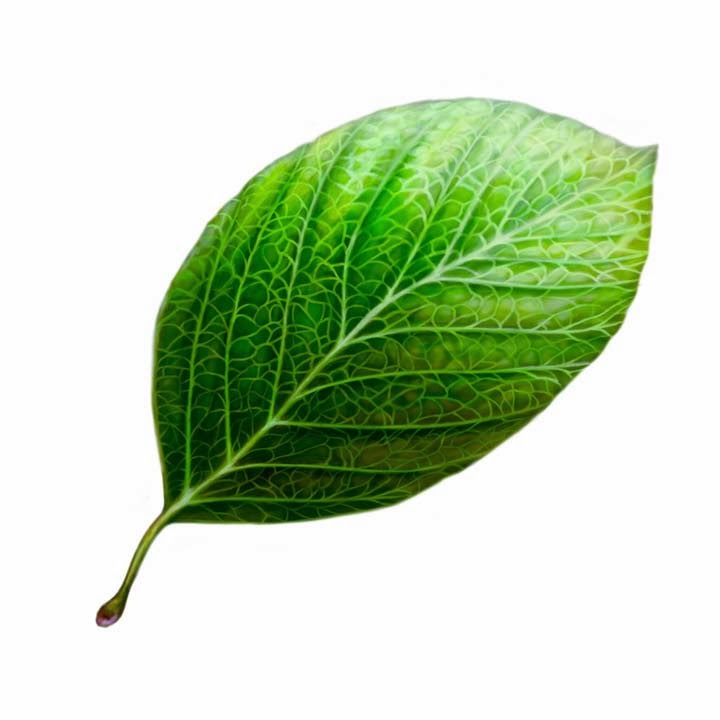

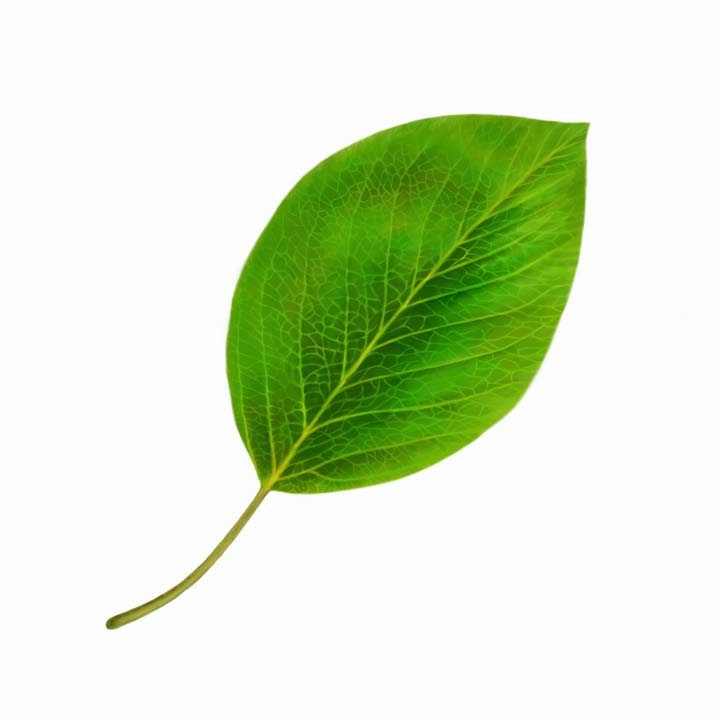










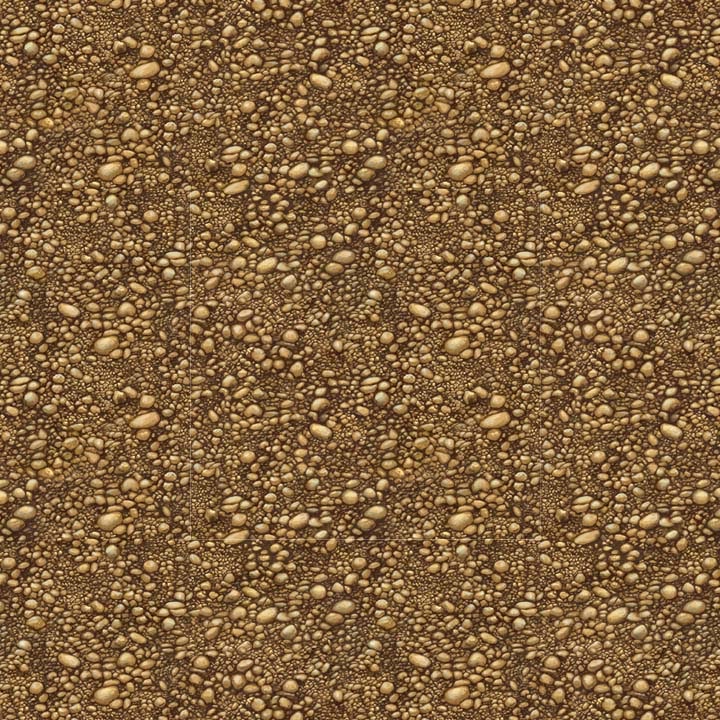




+copy.jpg)
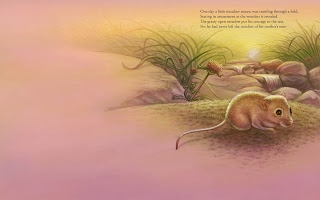


+copy3.jpg)

+copy.jpg)





 As we all know, honey bees need help! And kids need to be inspired by nature. Both of these goals come together in NECTAR: A Honey Bee Quest, a game app for kids. This game is the inspiration of
As we all know, honey bees need help! And kids need to be inspired by nature. Both of these goals come together in NECTAR: A Honey Bee Quest, a game app for kids. This game is the inspiration of 
















Fun! But I would not want to run into that creature unexpectedly and he looks like he'd be camouflaged in the rocks.
While the creature looks menacing, i imagined it more like a giant crab or crayfish type thing.